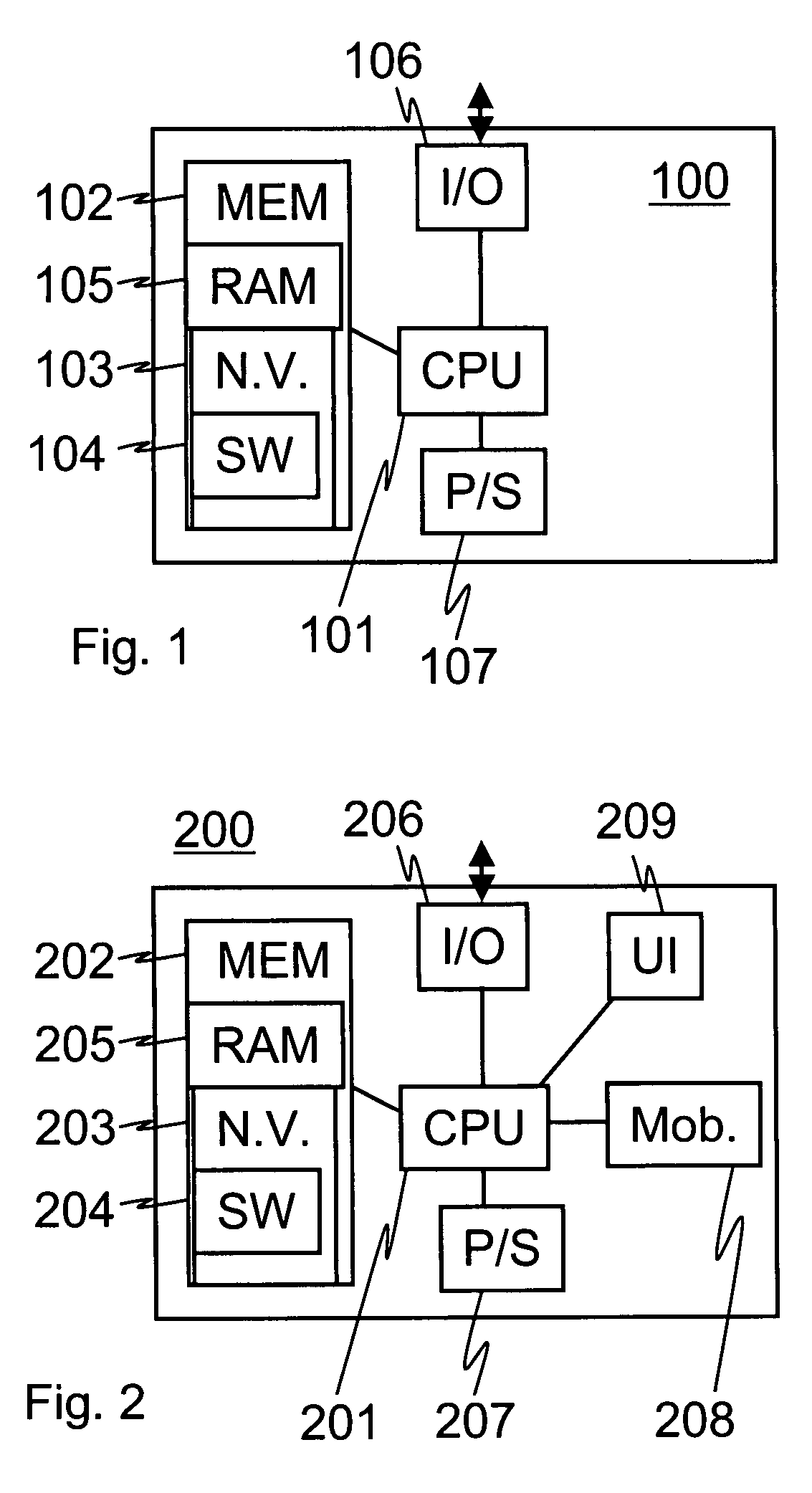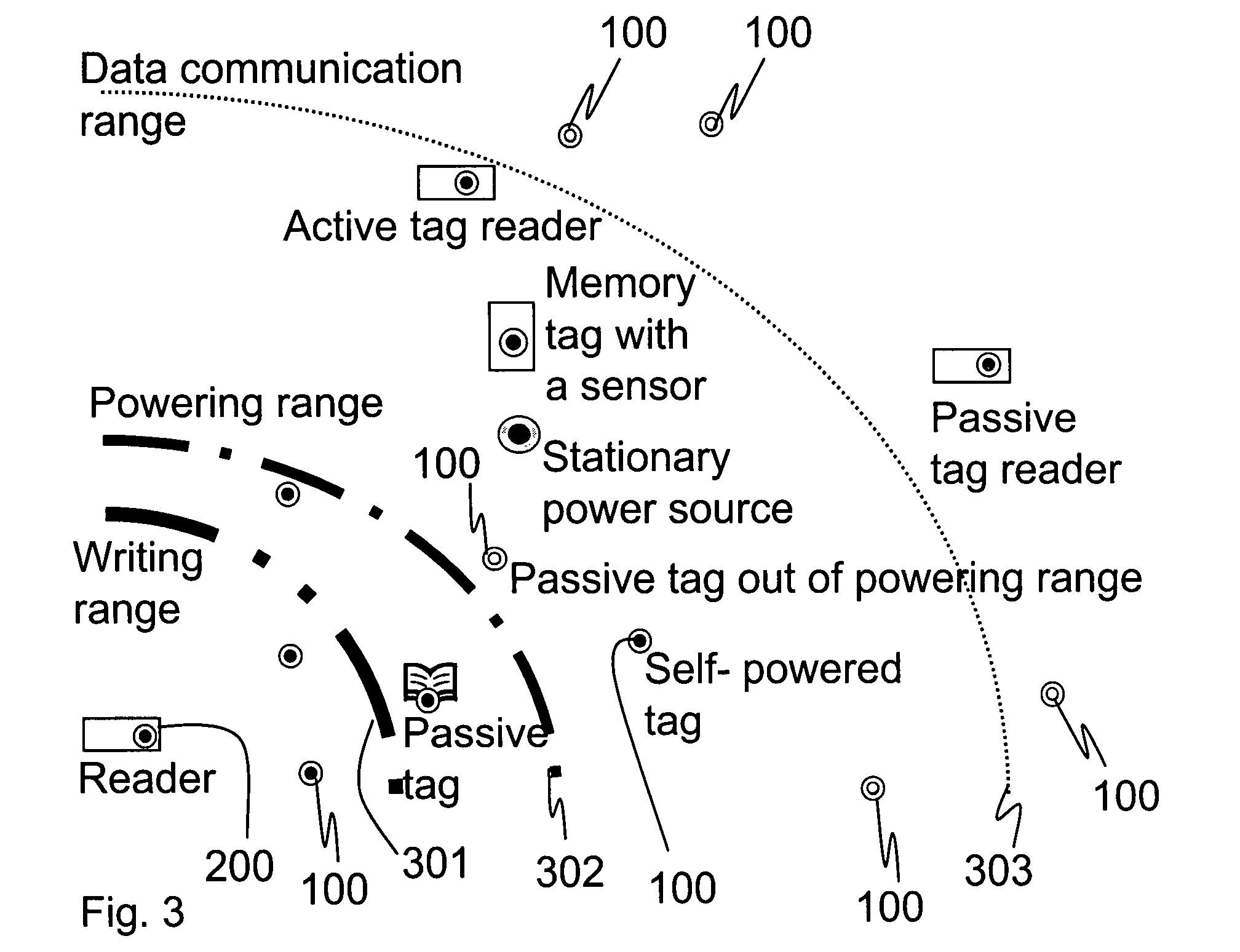Content storing device query
a content storing device and query technology, applied in the field of querying devices storing particular content, can solve the problems of no known technique to launch local data searches among, content search is one of the most difficult human tasks, and the operation range may improv
- Summary
- Abstract
- Description
- Claims
- Application Information
AI Technical Summary
Benefits of technology
Problems solved by technology
Method used
Image
Examples
Embodiment Construction
[0074]In the following description, like numbers denote like elements.
[0075]An embodiment of the invention is based on first querying by a reader device for surrounding local memory devices (e.g. RFID tags or other memory devices with local memory) for user desired content such as audio and / or video content, receiving query results, selecting content to be transferred and then receiving content according to the query request (that may or may not be the desired content but at least meets the search criteria and is therefore content corresponding with the query request or found content) from a local memory device or local memory devices to the querying device. It should be understood that there are also various different implementations to different phases of this embodiment which each can be freely chosen or combined to other implementations within the scope of the invention.
[0076]In support of the following description, the main structure of typical involved elements is described wi...
PUM
 Login to View More
Login to View More Abstract
Description
Claims
Application Information
 Login to View More
Login to View More - R&D
- Intellectual Property
- Life Sciences
- Materials
- Tech Scout
- Unparalleled Data Quality
- Higher Quality Content
- 60% Fewer Hallucinations
Browse by: Latest US Patents, China's latest patents, Technical Efficacy Thesaurus, Application Domain, Technology Topic, Popular Technical Reports.
© 2025 PatSnap. All rights reserved.Legal|Privacy policy|Modern Slavery Act Transparency Statement|Sitemap|About US| Contact US: help@patsnap.com



